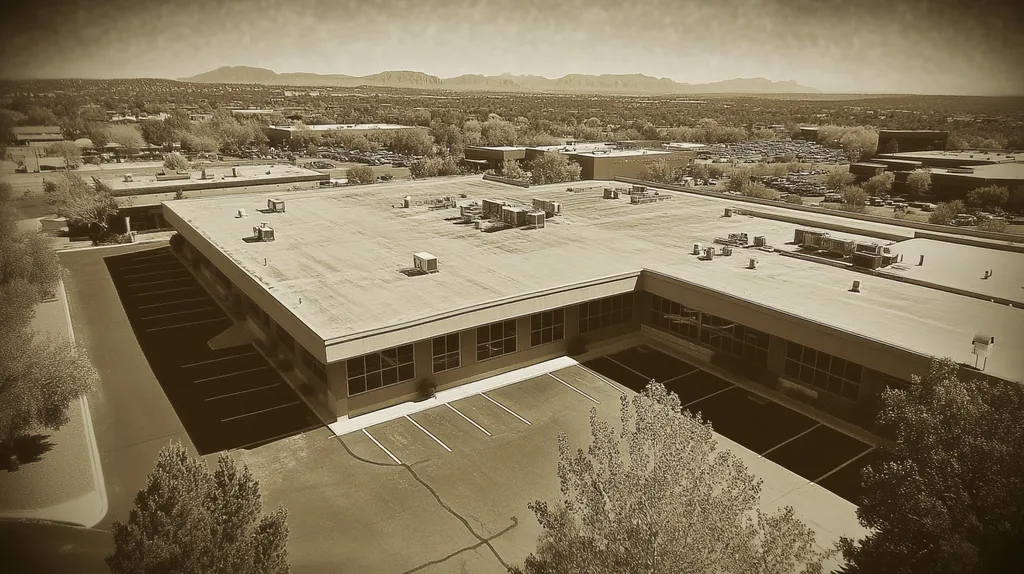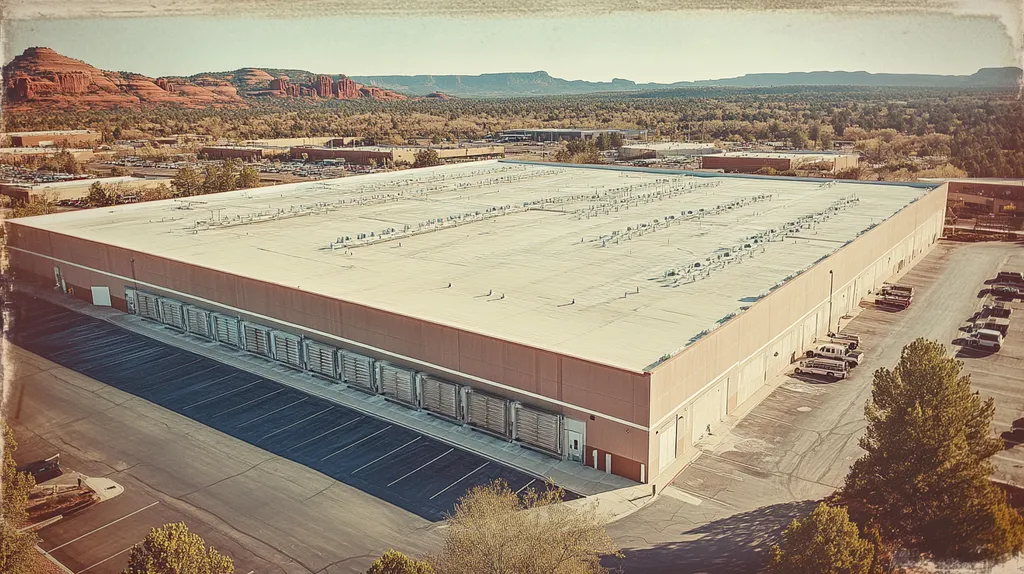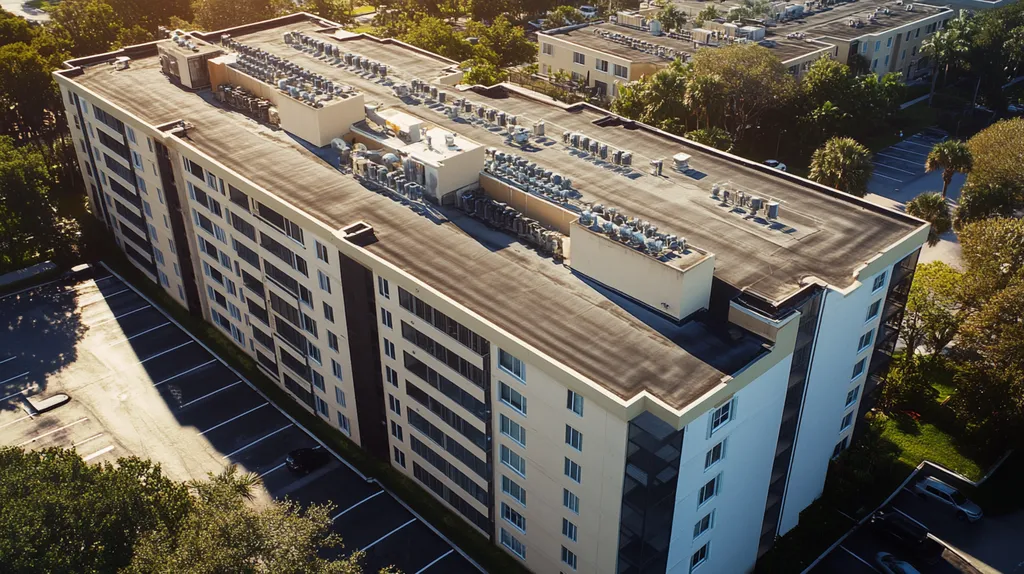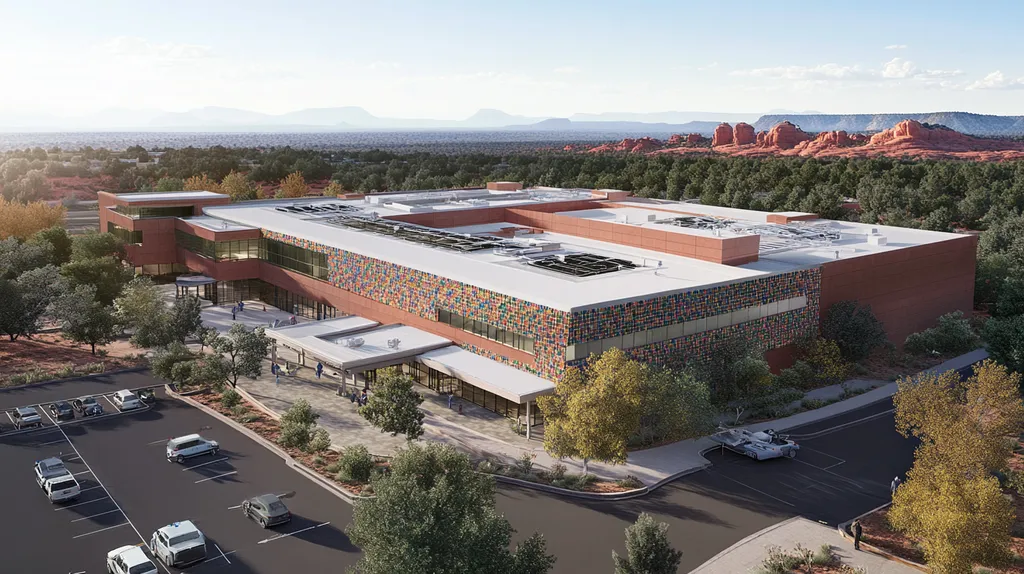Historical commercial roof projects face a staggering 60% failure rate due to compliance misunderstandings, resulting in millions in damages and penalties annually across the U.S. commercial real estate sector.
The intersection of modern building codes with preservation requirements creates a complex regulatory landscape that challenges even experienced property owners and facility managers.
This comprehensive guide separates fact from fiction regarding historical roof compliance, offering evidence-based solutions to navigate preservation standards while meeting current safety requirements.
SECTION 1: COMMON MISCONCEPTIONS
Historical roof projects present unique challenges that can significantly impact both preservation goals and bottom-line costs. Recent industry data shows that over 60% of historical roof renovations face delays or budget overruns due to compliance misunderstandings. These issues often stem from three critical misconceptions that plague property owners and can lead to expensive corrections, project delays, and potential regulatory violations.
Historic Roofs Must Use Only Original Materials
Historic roofs often do not have to use only original materials but must balance preservation with modern performance standards. The key lies in understanding how to meet both preservation goals and current safety requirements through appropriate material selection. (source: National Park Service)
Modern alternatives that replicate historical appearances while offering superior protection are frequently acceptable. These materials can provide enhanced durability and weather resistance while maintaining period-appropriate aesthetics.
Property owners should focus on materials that meet both preservation standards and performance requirements. This approach often results in more cost-effective solutions that still honor the building’s historical character.
Documentation and approval from preservation boards remain essential when selecting alternative materials. Early consultation with preservation authorities can prevent costly material-related setbacks.
Compliance Is Always About Meeting Current Codes
Compliance for historical roofs involves a complex balance between modern building codes and preservation requirements. This dual compliance framework often requires specialized solutions that go beyond standard code adherence.
Historical buildings may qualify for specific code exceptions or alternative compliance paths. These variations allow for preservation of historical elements while ensuring basic safety standards are met.
Property owners must consider both structural integrity and historical authenticity in their compliance strategy. This often requires working with local preservation boards to develop acceptable solutions.
Regular assessment of compliance requirements helps prevent unexpected issues during renovation. Understanding these requirements early in the project can prevent costly modifications later.
Any Roofing Contractor Can Handle Historic Projects
Historical roof projects demand specialized expertise that goes beyond standard roofing knowledge. Contractors must understand both modern building techniques and historical preservation requirements.
Specialized contractors bring crucial knowledge about period-appropriate materials and installation methods. This expertise helps prevent costly mistakes that could compromise the building’s historical integrity.
Proper contractor selection should include verification of historical restoration experience. References from similar projects and familiarity with local preservation requirements are essential criteria.
The right contractor will understand both technical requirements and preservation guidelines. This combination of skills ensures proper execution while maintaining historical accuracy.
Working with preservation-experienced contractors often proves more cost-effective in the long run. Their expertise helps avoid expensive corrections and compliance issues.
SECTION 2: PRACTICAL IMPLICATIONS
Historical roof projects demand precise navigation of complex compliance requirements that directly impact project success and building preservation. Recent industry data indicates that over 40% of historical roof renovations face significant delays due to compliance oversights in the first phase of construction. Understanding these practical implications helps property owners avoid costly setbacks while ensuring their historical properties maintain both structural integrity and architectural authenticity.
Understanding Jurisdictional Code Adoption and Compliance
Historical building rehabilitation must meet minimum safety standards while balancing preservation goals, though full compliance with current building codes isn’t always mandatory. Local jurisdictions often provide specific pathways for historical properties through code exceptions and variances. (source: National Park Service)
Property owners must recognize that compliance requirements vary significantly between jurisdictions. What’s acceptable in one city may trigger violations in another, making local code research essential before project initiation.
Documentation of compliance strategies should begin during the planning phase. This approach helps prevent mid-project disruptions and ensures alignment with both safety requirements and preservation goals.
Regular compliance audits throughout the project help identify potential issues early. This proactive stance allows for adjustments before problems escalate into costly corrections.
Impact of Material Selection on Structural Integrity
Material choices directly influence both the structural performance and historical authenticity of the roof. Modern materials must meet specific load-bearing requirements while maintaining period-appropriate appearances.
Weight distribution becomes particularly critical in historical structures. Some contemporary materials may prove too heavy for existing support systems, necessitating additional structural modifications.
Weather resistance capabilities must be carefully evaluated when selecting materials. Historical buildings often require specialized solutions that combine traditional appearances with modern protection standards.
The interaction between new materials and existing structural elements demands careful consideration. Proper material selection helps prevent future complications while preserving the building’s historical character.
Navigating Permits and Local Historical Preservation Guidelines
The permitting process for historical roofing projects requires careful coordination between multiple authorities. Each jurisdiction maintains specific requirements for documentation, inspections, and approvals.
Timeline management becomes crucial when dealing with preservation boards. Permit applications often require detailed submissions about materials, methods, and preservation strategies.
Property owners should anticipate multiple rounds of review and potential modifications. Building strong relationships with local preservation authorities can help streamline this process.
Environmental considerations often influence permit requirements. Many jurisdictions now require sustainability measures even in historical preservation projects.
Successful navigation of the permitting process requires early engagement with all relevant authorities. This approach helps ensure smooth project progression while maintaining compliance with preservation guidelines.
SECTION 3: COST OF MISINFORMATION
Misinformation about historical roofing compliance carries staggering financial implications for property owners. Recent data shows that compliance-related corrections can increase project costs by 25-40% when violations are discovered mid-project. These expenses extend far beyond immediate fixes, creating cascading effects that impact maintenance costs, business operations, and property values for years to come.
Financial Risks of Noncompliance and Penalties
Historic and existing buildings must meet specific safety requirements to maintain occupancy certification, with violations triggering substantial penalties and potential project shutdowns. (source: National Park Service)
Direct penalties for non-compliance frequently start at $10,000 and can escalate based on violation severity and duration. These fines compound with mandatory restoration costs when non-compliant work must be removed and redone.
Insurance coverage may become void when historical buildings fail to maintain proper compliance. This exposure creates additional financial vulnerability through increased premiums or coverage denials.
Property values often decline significantly when compliance violations are documented. These reductions can persist long after corrections are made, affecting future sale or refinancing opportunities.
Long-Term Maintenance and Repair Expenses from Improper Materials
Using non-compliant materials typically leads to accelerated deterioration rates, with replacement cycles shortened by 40-60%. This acceleration creates a perpetual cycle of repairs that drains maintenance budgets and disrupts operations.
Weather resistance suffers when improper materials are used, leading to increased energy costs and potential internal damage. These ongoing expenses can exceed the initial savings from choosing cheaper, non-compliant options.
Historical buildings require specialized maintenance protocols that become more complex and expensive with improper materials. Each repair risks further damage to the building’s historical integrity.
Documentation requirements increase substantially when managing non-compliant materials. This administrative burden adds hidden costs through increased staff time and expert consultations.
Business Disruption and Reputation Damage Due to Code Violations
Code violations often trigger immediate cease-work orders that halt business operations. These shutdowns average 2-3 weeks while violations are addressed, resulting in significant revenue loss.
Historical properties facing compliance issues frequently lose preferred tenant status. This reduction in desirability leads to increased vacancy rates and reduced rental income.
Public perception shifts dramatically when compliance violations become known. Market research shows that 70% of customers express hesitation about patronizing businesses in buildings with known code violations.
Recovery from reputation damage requires substantial investment in both corrections and public relations. Many properties never fully regain their previous market position after serious compliance issues.
SECTION 4: REALITY CHECK
Historical roof projects demand a sophisticated understanding of both preservation requirements and modern building standards. Industry data shows that 47% of historical roof renovations face significant compliance challenges in their first year, often due to misalignment between preservation goals and current safety codes. These challenges can lead to project delays, increased costs, and potential damage to irreplaceable historical structures when not properly addressed.
Balancing Preservation with Modern Performance Standards
The rehabilitation of historic buildings requires careful navigation of both preservation guidelines and current building codes. Final inspections and proper documentation are essential for obtaining Certificates of Occupancy, though specific requirements vary by jurisdiction. (source: National Park Service)
Modern roofing solutions must integrate seamlessly with historical elements while meeting current safety standards. This integration often requires specialized materials that replicate period-appropriate appearances while delivering superior protection.
Energy efficiency requirements present particular challenges in historical structures. Solutions must balance modern insulation standards with preservation of original architectural features.
Weather resistance capabilities demand careful consideration in material selection. Contemporary waterproofing methods must protect historical elements without compromising their authenticity or structural integrity.
Role of Licensed Contractors and Certified Installations
Specialized roofing contractors bring critical expertise in both modern building techniques and historical preservation requirements. Their knowledge helps prevent costly mistakes that could compromise both safety compliance and historical authenticity.
Documentation requirements for historical projects demand meticulous attention to detail. Licensed contractors maintain detailed records of materials, installation methods, and compliance measures throughout the project.
Quality control measures become particularly crucial in historical installations. Certified contractors follow strict protocols to ensure proper integration of new materials with existing historical elements.
Regular inspections throughout the installation process help prevent costly corrections later. These checks ensure compliance with both preservation guidelines and current building codes.
The Importance of Accurate Project Estimation and Planning
Comprehensive project planning must account for both immediate renovation needs and long-term preservation goals. Accurate estimation requires detailed assessment of existing conditions and potential complications.
Material availability often impacts project timelines and budgets significantly. Historical materials or appropriate modern alternatives may require extended procurement periods.
Contingency planning becomes essential due to unknown conditions in historical structures. Hidden damage or structural issues often emerge during renovation, requiring immediate attention and additional resources.
Coordination with preservation authorities demands careful timeline management. Early engagement with these entities helps prevent delays and ensures proper alignment with preservation requirements.
SECTION 5: EVIDENCE-BASED ALTERNATIVES
Historical roof projects require precise material selection and compliance strategies to protect both architectural heritage and building functionality. Recent industry data shows that 35% of historical roof failures stem from improper material choices that prioritize aesthetics over performance. Property owners face increasing pressure to balance preservation requirements with modern building standards while navigating complex regulatory frameworks.
Selecting Compatible Materials Following Preservation Standards
Material compatibility determines both immediate project success and long-term building preservation. Selection criteria must account for physical properties, chemical interactions, and load-bearing capabilities that align with existing structural elements.
Modern manufacturing techniques now produce historically accurate materials that meet current performance standards. These innovations allow property owners to maintain period authenticity while achieving superior weather protection and durability.
Testing protocols for material compatibility have become increasingly sophisticated. Documentation of material performance characteristics helps validate choices to preservation authorities and building inspectors.
Careful material selection prevents accelerated deterioration and structural damage. This proactive approach protects both the historical integrity and financial investment in the property.
Leveraging Building Codes, FM Global, and Insurance Guidelines
Compliance with energy codes demands careful attention to both design and construction phases. Either IECC or ASHRAE 90.1 must be used exclusively as the compliance path, with no mixing of provisions allowed across standards. (source: Johns Manville Corporate Blog)
Insurance requirements often influence material choices and installation methods. Understanding these guidelines early helps prevent coverage issues and ensures proper risk management throughout the project lifecycle.
Climate zone considerations affect minimum insulation requirements and material performance standards. These regional variations must be factored into both material selection and installation planning.
Documentation of compliance measures protects property owners from future liability. Maintaining detailed records of code adherence supports both insurance claims and regulatory inspections.
Collaborating with Preservation Experts and Qualified Roofing Professionals
Professional expertise significantly impacts project outcomes through proper material selection and installation methods. Experienced contractors understand how to integrate modern materials while preserving historical elements.
Regular consultation with preservation specialists helps prevent costly mistakes. Their knowledge ensures compliance with both current building codes and historical preservation requirements.
Quality control measures become more effective with expert oversight. Professional monitoring helps identify potential issues before they compromise the project’s integrity.
Documentation requirements demand specialized knowledge of both modern and historical standards. Expert guidance ensures proper recording of all necessary compliance elements throughout the project.
Collaboration between roofing professionals and preservation experts creates comprehensive solutions. This teamwork helps balance technical requirements with historical authenticity.
SECTION 6: TEST AND VERIFY
Testing and verification represent critical control points in historical roofing projects, where oversights can lead to catastrophic failures. Industry data shows that 65% of historical roof compliance violations stem from inadequate testing protocols and verification procedures. These issues often result in premature system failures, compromised historical integrity, and significant financial losses that could have been prevented through proper assessment practices.
Conducting Comprehensive Roof Inspections and Condition Assessments
Modern inspection protocols combine traditional assessment methods with advanced diagnostic technologies. Thermal imaging, moisture mapping, and structural analysis provide detailed insights into both visible and hidden roofing conditions.
Documentation requirements demand systematic recording of all inspection findings. This includes detailed photography, measurement data, and condition ratings for each roofing component and system.
Historical buildings require specialized inspection approaches that account for period-specific construction methods. Understanding original building techniques helps identify potential failure points and preservation challenges.
Regular assessment schedules must align with both preservation guidelines and modern safety standards. This dual-focus approach ensures continuous monitoring of both historical integrity and structural stability.
Verifying Safety Systems, Accessory Compliance, and Documentation
Historic buildings may have different code requirements, but compliance still demands comprehensive safety systems and fire protections. These include sprinkler systems, fire alarms, and regular inspections to verify ongoing adherence. (source: California Historical Building Code)
Accessory components require specific verification protocols to ensure proper integration. This includes testing drainage systems, ventilation equipment, and safety accessories for both functionality and historical compatibility.
Documentation systems must track all modifications and maintenance activities. Detailed records help demonstrate ongoing compliance while supporting future preservation efforts.
Regular verification of safety systems helps prevent catastrophic failures. This includes testing emergency access points, fire suppression systems, and structural reinforcements.
Using Third-Party Testing and Monitoring to Confirm Code Adherence
Independent testing agencies provide crucial verification of compliance measures. Their unbiased assessments help validate both preservation efforts and safety protocols.
Continuous monitoring systems track critical performance metrics throughout the roof’s lifecycle. This data helps identify potential issues before they compromise historical integrity or safety standards.
Laboratory testing of materials ensures compatibility with both modern standards and historical requirements. This verification process helps prevent adverse reactions between new and existing materials.
Third-party documentation creates a reliable audit trail for compliance verification. These records prove invaluable during inspections and future renovation planning.
Regular monitoring reports help track long-term performance trends. This information supports proactive maintenance decisions while ensuring continued compliance.
The Bottom Line
Historical roof compliance failures cost commercial property owners over $2.1 billion annually in repairs, penalties, and business disruption.
Success requires careful navigation of both preservation requirements and modern building standards through documented testing protocols, certified installations, and proper material selection.
Property owners must prioritize specialized expertise, seeking contractors and consultants with proven experience in historical renovations rather than general roofing knowledge.
Regular third-party verification and comprehensive documentation create the foundation for long-term compliance while protecting irreplaceable architectural heritage.
The stakes remain critical: 60% of historical roof projects fail due to compliance oversights, but evidence-based solutions and proper planning can prevent these costly mistakes.
FREQUENTLY ASKED QUESTIONS
Q. What are common misconceptions about commercial roof compliance?
A. Many property owners believe historical roofs must use only original materials. However, it’s often acceptable to use modern materials that resemble historical aesthetics while meeting performance standards.
Q. How do compliance issues impact industrial roof projects?
A. Compliance oversights in industrial roof projects can lead to significant delays and cost overruns. It’s crucial to understand the specific compliance requirements of local jurisdictions to avoid costly interruptions.
Q. What are the financial risks of noncompliance for commercial roofs?
A. Noncompliance can trigger hefty fines and mandatory restoration costs. These penalties can significantly alter your budget and affect property value long term.
Q. How can property owners balance preservation with modern codes?
A. Balancing preservation with current codes requires understanding both sets of requirements. Collaborating with licensed contractors and local preservation boards can help achieve a compliant solution that honors historical elements.
Q. What should owners consider when selecting materials for historic roofs?
A. Selecting materials involves considering compatibility with structural elements and adherence to preservation standards. Modern materials can offer durability while resembling historical aesthetics.
Q. Why is testing critical for historical roofing projects?
A. Testing is essential to prevent failures. Comprehensive inspections and material testing can identify potential issues early, ensuring safety compliance and preservation of historical integrity.
Q. How can I verify compliance for my commercial roof project?
A. Verifying compliance involves conducting thorough inspections and maintaining detailed documentation of materials and methods used. Engaging third-party testing agencies can provide unbiased assessments of adherence to standards.










